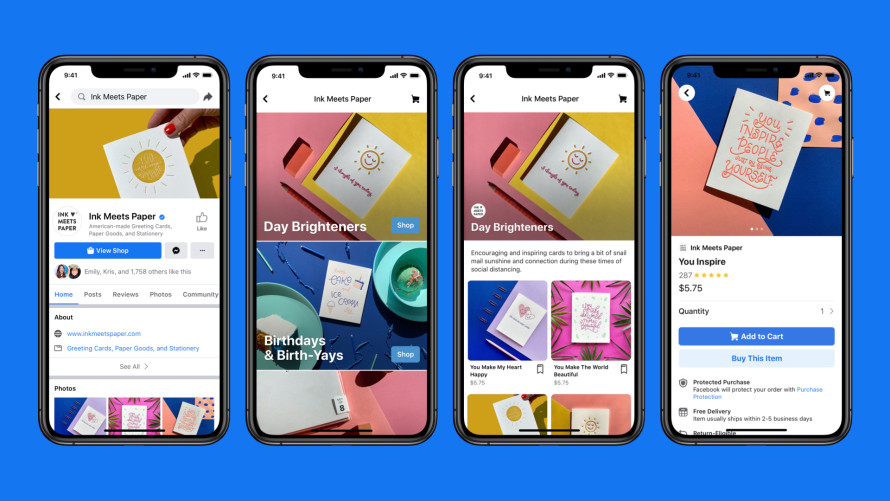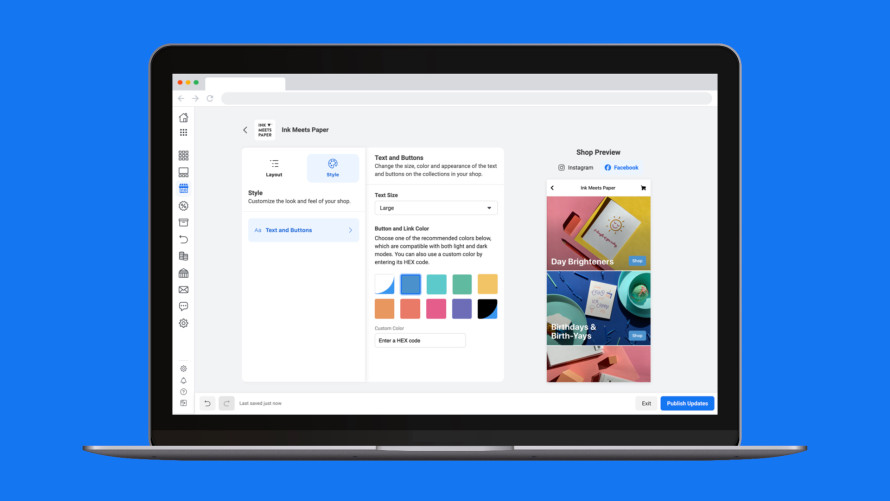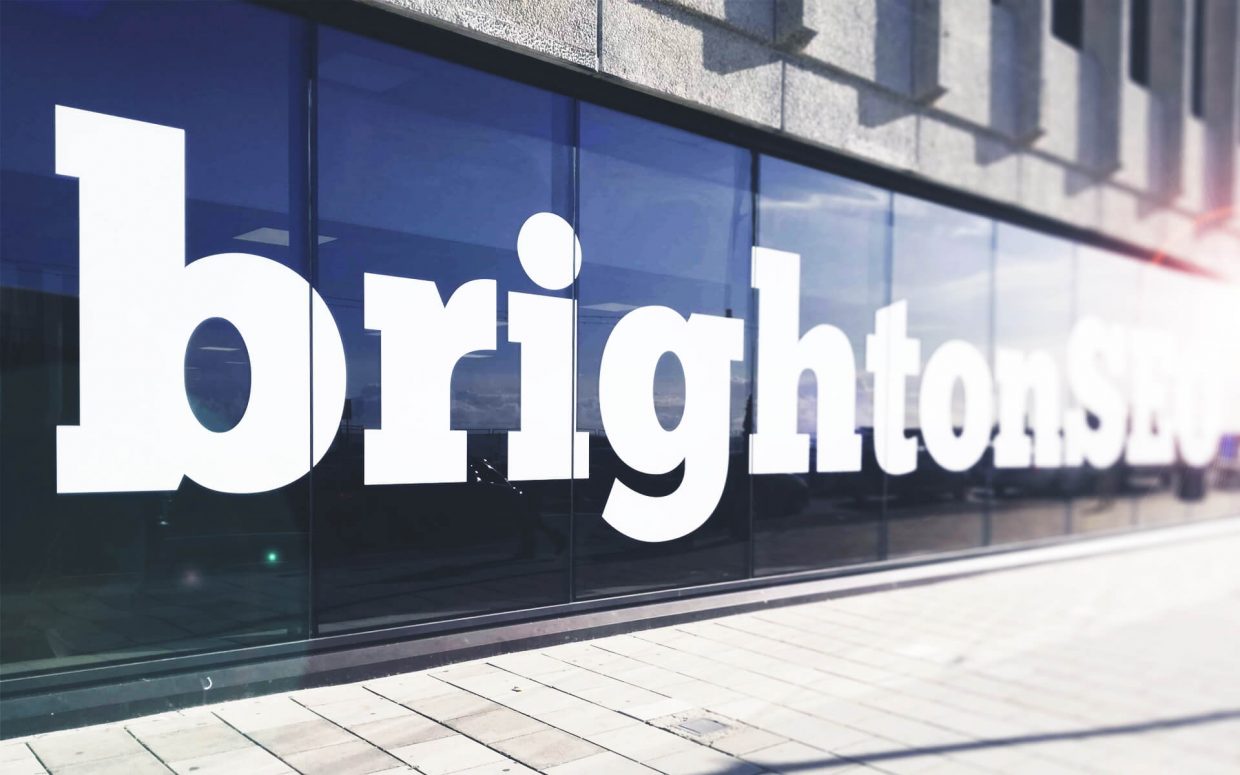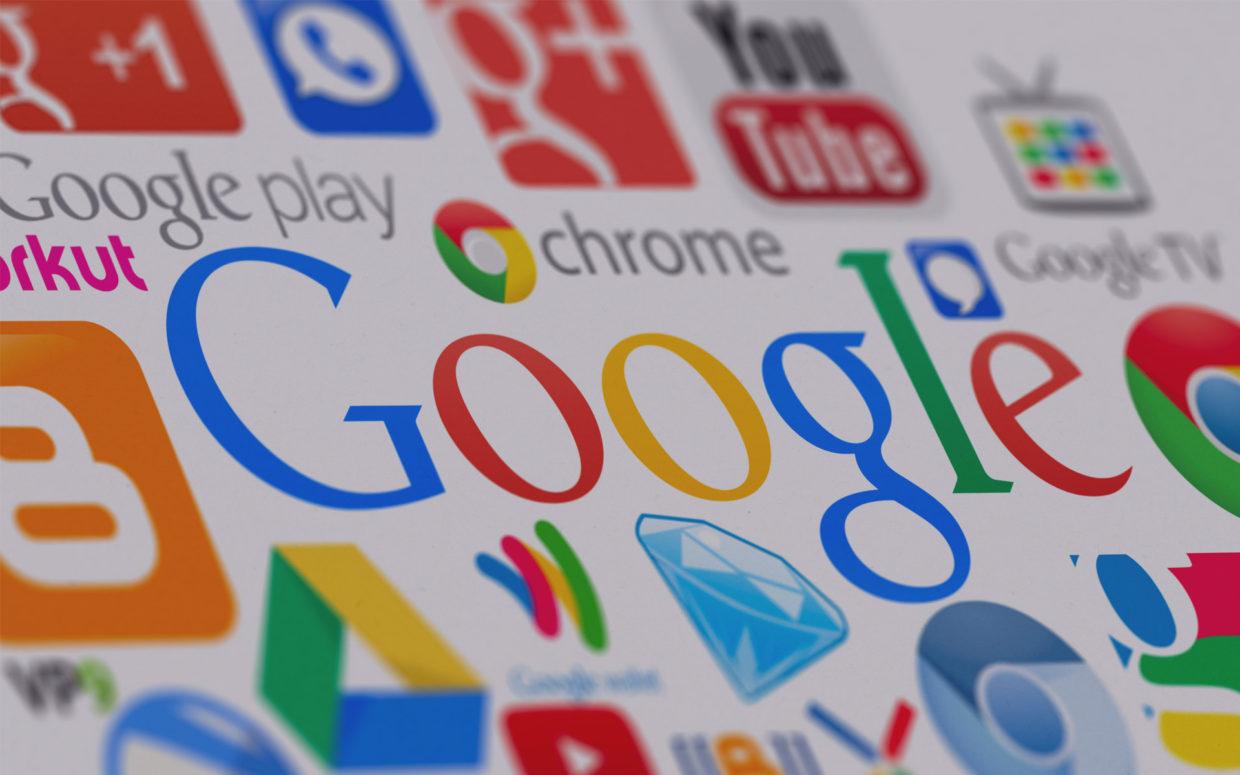Facebook Shops is launching soon: Here’s what you need to know
Facebook is launching Facebook Shops in a bid to gain a stronger foothold in the eCommerce world and compete with the likes of Amazon and eBay.
Shops will allow businesses to set up free storefronts on Facebook and Instagram. Facebook has had shopping features previously, but this update will allow companies to completely transform their Facebook pages into more accessible and attractive storefronts.
What is Facebook Shops?
In a recent post, Facebook has stated that:
“Facebook Shops make it easy for businesses to set up a single online store for customers to access on both Facebook and Instagram. Creating a Facebook Shop is free and simple.”
“Businesses can choose the products they want to feature from their catalogue and then customise the look and feel of their shop with a cover image and accent colours that showcase their brand. This means any seller, no matter their size or budget, can bring their business online and connect with customers wherever and whenever it’s convenient for them.”
Essentially, Facebook shops will function similar to existing eCommerce platforms but will only be available across Facebook and Instagram applications.
There are also plans to roll out features that allow businesses to handle customer support issues through Messenger, Instagram, and WhatsApp
Is Facebook Shops Free?
Shops are completely free to create – the only potential charge to businesses if a customer uses Facebook’s checkout option but this option can be turned off and users can instead be directed to the businesses’ own website checkout process.
If a business has a fully functioning eCommerce website then all products can be listed on Facebook Shops for free as then there is no need to use Facebook’s internal checkout process.
Is Facebook Shops Worth It?
Absolutely! As COVID-19 has forced shoppers away from the high streets, online sales have soared. These new Facebook and Instagram shopping features present another opportunity to get your products in front of consumers who are looking to purchase online.
With 1.73 billion daily active users worldwide, Facebook has a massive reach. Shops allow businesses to tap into this audience directly. With billions of users now able to easily browse products without leaving Facebook, this is a great opportunity to boost sales in a time that may be difficult for a lot of companies. With no cost to Facebook and such a big audience for your products, there is no reason not to try it out.
Even if you don’t currently have a huge following on your Facebook, the platform allows you to run paid ads that will put your products and storefront in front of targeted demographics.
When does Facebook Shops Launch in the UK?
Although Facebook Shops has launched in the US, it will be rolled out to the UK and rest of the world in the next few months.
How do I set up a Facebook Shop?
To upload all of your products to a Facebook Shop, you will need to create a product data feed or sync your OpenCart, WooCommerce or Magento website.
The digital marketing team at eSterling are able to guide you through this process and get everything in place ready for you to start selling on Facebook shops.
If you need more information on how we can help you sell on Facebook Shops or any advice on social media marketing, please get in touch now.
BrightonSEO 2019 Overview
eSterling recently joined some of the best Digital Marketers at the the UK’s largest search marketing conference, BrightonSEO.
During the huge one-day event, we managed to attend a number of interesting talks encompassing everything from eCommerce SEO, Client Success and even a Q&A with John Mueller from Google. With a host of guest speakers from every corner of the industry, it was impossible to fit everything in but we have recapped our day below.
For the first session we went to a session that covered site speed, something that anyone reading this has probably heard a lot about of the past 18 months. Here we saw some great talks, the first from Rachel Costello from Deepcrawl who spoke about “how we can meet user’s high expectations”.
Secondly we heard from Polly Pospelova on “how to get a 100% lighthouse performance score” again this is something that people will be familiar with. As we have done numerous times I’m sure you’ve all been to Google’s Page speed insights tool and wondered how to get that wonderful score of 100. Here Polly shared the steps and processes used to get the magical 100 out of 100, we’ll definitely be using some of these tips on our sites in the near future.
Finally Chris Simmance talked about “how to trim js, css & external stuff to slim down & speed up your site”. He talked about how we can identify and trim down assets on individual pages that can help us reduce code bloat and improve site speed and performance on a page by page basis. You can view his slides here.
One of our SEO executives attended Search Presence Intelligence – Where Search Meets Business Intelligence by Stephan Bajaio – this was on how SEO can help other departments reach their goals. Stephan gave interesting examples with HR and Product Development.
For Product Development the example was about naming products. Through experience out SEO team will know how to create engaging and keyword rich product titles for more successful SEO campaigns.
This session also included, Why UX (User Experience) is SEO’s best friend by Luke Hay and Michelle Wilding-Baker this talk focused on how beneficial UX is that matches a user’s intent and how that can be determined by looking at search results.
The benefits of pulling together information that can then be used to decide on what elements a page should have, such as having an uncluttered, fast and mobile friendly website, something that we incorporate within all our projects.
The afternoon sessions were about link building and clever ways to get other websites to link back to your website and increase your site authority. The SEO Manager from Screaming Frog talked about ‘linkbait’ and how to create engaging and funny content to attract attention and hyperlinks to your site.
What you need is a good idea, something our SEO team works together with our clients to produce.
The second speaker gave some tips on how to build links for our clients by applying automated and personalised methods. He mentioned some seo analysis and link building tools and provide us with advice on how to utilise them in our link building strategies.
The last one focused on integrating the gamification technique to the SEO strategy. An effective way to build links at a rapid pace by creating and launching a game that everyone would talk about and would love to share.
We then attended a session on Paid Search.
First speaker focused on how algorithms and automation systems can help us get a better idea of the overall ads performance and how to use data to get insights and knowledge that could determine business decisions and strategy.
The second one was about Local PPC. Here we picked up useful tips on how to build your local ppc strategy for location-based companies and make the most of your budget, such as location settings- radius, locations extensions, bidding, and keywords with geo- location.
The last session focused on other advertising platforms such as Facebook, YouTube, or display, they discussed the strengths and weaknesses of each platform and the importance of retargeting.
This is something that is extremely relevant considering the continued increase in users on social media platforms.
For our final session, the focus was on SUCCESS. This talk was about how we can use data to keep our customers happy by Eli Zheleva. The discussion was about how we can better understand our client’s demographics, goals and provide reports that show a true representation of targets.
The core points in relation to our customers’ needs that we picked up from this talk were:
- Revenue is great. Profit is greater!
- Listen to our customers
- Know what our customers think about our service & how we can improve
- Get reviews but not to be scared of negative reviews!
- Keep an eye on competitors
- Focus on ROR
Over the next few weeks we will be putting together more in depth posts covering all of the talks we attended and what tips you can do to improve your website and SEO results.
In the meantime, if you need and help/information about our Digital Marketing services – SEO, PPC and Social Media, get in touch with us!
What is the impact of Google’s new paid search ad layout on organic search…
Over the years, the Search Engine Result Pages (SERPs) have changed a lot. Features like news, images, videos and the Knowledge Graph have impacted the display, sorting and order of SERPs, dramatically impacting organic listings.
Recently, Google decided that paid search ads will no longer appear on the right-hand side of search results for desktop users and up to 4 paid search results will appear at the top of the page.
Paid search ads that fall below the 4th rank will appear at the bottom of the page, which has limited visibility to end users, for a total of 7 ads per page max.
This is a big change, but how does it really impact organic search?
Like many companies, Google has seen mobile traffic grow at an accelerated pace over the past two years. This new layout makes the desktop experience very similar to the current mobile SERP. It will allow Google to provide more relevant results for end users and also provide better performance for advertisers
The key here is the fact that Google is very good at understanding intent. Google can distinguish a transactional query from an informational query.
How does this impact organic search?
Now that paid search ads are taking up more organic space, click-through rates for organic search listings, especially in the first two positions will probably decrease because the organic results have been pushed farther down the page.
Since the organic search results will be relegated to further down the list, this will cause more advertisers to get more visibility from the top paid search ads, but it comes at a high cost.
If brands really want to get the most out of search, they will need to create an integrated organic and paid search strategy with focus on top rankings and paid ads to maintain visibility and be in front of their target audiences.
With more paid listings appearing you will need to focus paid landing pages towards searchers in the buying/decision-making stages, whereas your organic landing pages should be better positioned (and possibly expanded) to gain visitors in the research/tought stages.
In summary, it will be more important to rank in the first two organic positions to capture the most clicks and visibility from organic search.
Since the organic results are getting pushed further down the page, both paid and SEO must work together to gain the best results.
The SERPs will continue to evolve as Google looks for new and innovative ways to make the desktop experience similar to the current mobile SERP and provide the most relevant results for end users.
Agencies and brands must adapt and put together results-driven strategies and tactics using both paid and organic search together to maximize ROI, capture more conversions and provide end users with relevant content in their moment of need.
Google Become Alphabet in a Huge Restructure
Google Become Alphabet in a Huge Restructure
Recently, Google announced that they would no longer be functioning under the well-known brand, but restructuring as ‘Alphabet’. This will be the overriding holding company, with Google becoming a subsidiary of this.
The whole shake-up has emerged from the top, with Google’s co-founders, Larry Page & Sergey Brin, stating that the entire company will be changing, with big alterations to the structure and management; the biggest change being that Sundar Puchai will now oversee the search engine, Google.
This restructure comes as part of an initiative to give investors chance to see where their money is going and exactly what it’s being spent on. With the huge success of the search engine, it’s clear that Google, or ‘Alphabet’, can play its hand elsewhere.
The new company, Alphabet, will preside over a collection of companies, the largest of which will be Google.
All shares of Google will automatically convert into corresponding shares of Alphabet, which will continue to trade under the stock ticker symbols GOOG and GOOGL. Shares in Google soared 5% in after hours trading. The new structure is said to be similar to Warren Buffett’s Berkshire Hathaway, which wholly owns a number of diverse holdings and has stakes in several others.
It seems that Google will continue to push the main Internet products that the business has to offer, but Alphabet will expand and increase the growing need for other products and business sectors. Statements suggest that the separation of the companies will enable them to independently market items that aren’t entirely related.
It remains to be seen whether Google will simply continue to tell shareholders to be content with their profits when it comes to some major business segments.
Social Media – Services & Tariffs
Take a look at our new Social Media Packages that have been designed to work along side your current SEO Campaign.
A Social Media Package with us will enhance you websites presence across the internet as well as providing you with a source of Social Media content for your business.
For further information click here to view our Social Media offerings alternatively do not hesitate to contact our team on 0121 7668087 or email us on helpdesk@esterling.co.uk
Rap Genius vs. Google
Rap Genius didn’t find the best present from Santa in their stocking when they received a penalty from Google for using link schemes to boost their search rankings. This has resulted in their website not being found on the first page of results for even their own brand name. Instead news stories reporting this and their social media accounts are displayed. A site that saw over half a million unique visits a day has now been reduced to 10% of that showing the enormous power that Google hold in making an online business successful.
The link scheme they were penalised for was asking bloggers to join and affiliate scheme by adding a link to their website in exchange for a ‘thank you’ tweet from Rap Genius. In Google’s eyes even agreeing to exchange a tweet for a link back to a website is considered ‘paying’ for it and falls under “exchanging goods or services for links” which can result in a penalty. A link in a tweet may not have the same value to Google as a link on a website but social media still has an influence on search rankings. For Google this is about the credibility of the search results they provide and need to have these highly visible targets to penalise so as to not encourage link buying behaviour.
Critics argue that the manual penalties that Google applies are not done in a fair way as there are plenty of sites that buy links yet do not get penalised. The consensus is that Google would not be so vocal and stringent about the buying of back links if it didn’t actually work and wasn’t the easiest method to get a higher ranking.
It can be frustrating that behaviour of competitors is overlooked or even tolerated. When your competition is clearly buying links in order to improve their rankings yet do not receive a penalty and you follow Googles best practices and still get a lower position on search results it can be very tempting to follow suite. This is why gaming their SEO would have been a strategy that was seriously considered.
Most agree that Rap Genius has, in their market, the best content and is perceived to be the least spam driven lyrics site on the web. However others suggest that they couldn’t rely upon this to continue having good rankings. While they may have offered a better user experience they didn’t have the number of lyrics that other sites did. In addition while they may have built up an on-site community this would not be as important to ranking in Google as just providing the basic information people look for.
Will Rap Genius be able to return to the top of rankings by cleaning up their site and disavowing those links and will Google be seen to apply their penalties in a fairer way? We will await that news.
Shh, don’t mention Christmas!
As ludicrous as it sounds, there are only 106 days left until Christmas and whilst the sane amongst us are still hanging desperately onto barbeque season and flip flops, the retailers amongst us know that now is the time to get ready for the festive season. The mince pies are in the supermarkets, the incidence of toy adverts on the television is steadily increasing and consumers, whether they know it or not, are being subtly herded towards the bright lights and ringing tills of Christmas shopping.
Now is the time to make sure your website is ready for the approaching season of madness, take stock, decide on any strategies or special offers and make sure your web development company has details of any changes you want to make sooner rather than later. Christmas 2013 is going to be tough for retailers but with a slight upward trend in the amount of consumer spending, for the well-prepared things are looking up. So, what to do to get your website ready?
1. Freshen up.
Have a good check through your content. It is always a good idea to change or add to your website, keeping your content fresh not only gives you Google points, but it keeps your customers interested too. If your site has a featured products section, start adding in your best-sellers or any new ranges. Make sure any photography is professional and shows off your products to their best advantage.
2. Special Offers.
Consider running some seasonal offers. Online purchasers love little extras like free delivery and that can make the difference between them choosing your site and someone else’s for their gifts. Most modern ecommerce systems will allow you to display linked products (customers who bought this also bought that). Alternatively a good old-fashioned BOGOF always goes down a treat.
3. Keep things simple.
Making your website hassle-free is one major way of improving your customer commitment. Look at how smoothly your search function works, and how easy it is for customers to checkout. Keep things simple and give good customer service and people will come back.
4. Don’t go mad on the tinsel.
Although you want to get ready for the festive market, don’t over-do the Christmas vibe. Gradually introduce changes to the site to get ready for the bells and whistles of December, but don’t go for it too early.
If you need to discuss any promotional changes to your website, or would like further information on website design, get in touch with eSterling today. We offer full design and development services to ensure your website is at the heart of your business.
I/O, I/O, It’s Off To Work We Go… Google’s I/O Conference 2013
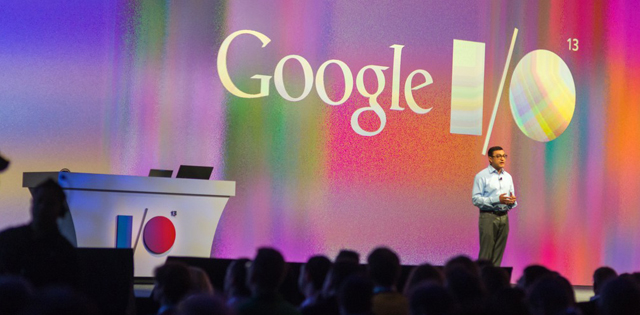
Google’s annual developer conference, I/O (that’s geek-speak for Input/Output, to all you non-techies) went ahead last week. Whilst we weren’t able to fly the team out to San Francisco and we’ve been hard at work preparing for the upcoming Penguin 2.0 update, we have been keeping a keen eye on what went on at the event. Over the weekend we finally got time to sit down and watch the keynote from the event in it’s entirety ( all 3 hours, 51 minutes and 25 seconds of it!) so here’s our run down of the new tech that the Big G has unleashed…
Google Play Music goes Streaming
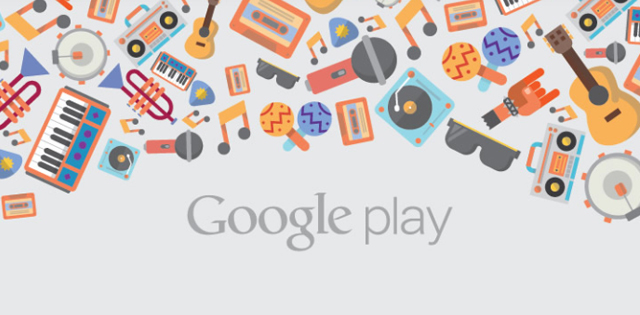
In what looks like an attempt to go head-to-head with services like Spotify, Pandora and Grooveshark, Google Play Music will now offer unlimited streaming music for a monthly subscription fee of $9.99. Dubbed “Google Music All Access”, the new service will offer radio-style streams and smart playlists, but whether this is enough to compete with the existing options in this field remains to be seen.
Maps Updated
One of the most useful Google services, Google Maps has been given a massive update, including a serious design refinement. The new Maps isn’t just a pretty face though – sporting tighter integration with Google’s social services, more emphasis one Street View and 3D, and the ability for users to submit Android “Photo Spheres” enabling people to actually look around the interior of businesses and public places, this is one of the most significant announcements at this year’s I/O. For those planning on going a bit further afield for their next holiday, Google Maps now includes the astounding ability to explore outer space! Don’t throw out your old A-Z atlas just yet though – the new and improved Maps service is currently invite only. Head over to the this page to request an invite.
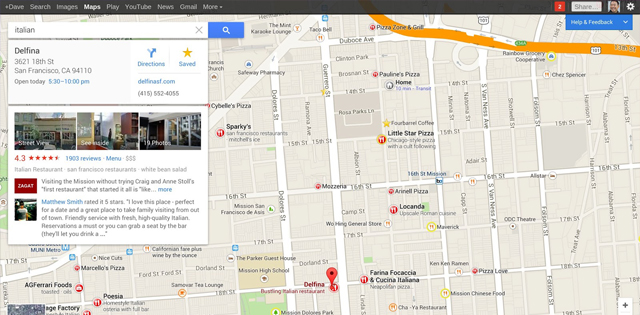
Google Wallet and Gmail Integration
Google Wallet has now been tightly integrated with Gmail to allow you to send money as an email attachment, making sending cash from your Wallet easier than ever. On top of this, Google have released an API that allows developers to streamline the process of paying with your Google Wallet from within apps or online. Whilst Google is keen to stress that they are not abandoning the NFC element of Google Wallet, these new additions could really give the service the boost it needs to take off properly!
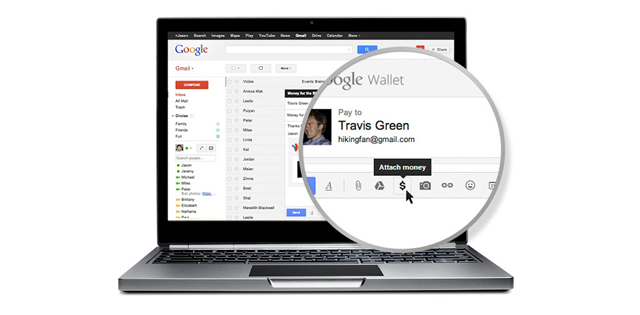
Google Play Gets Games Services
Google Play will provide games developers with the ability to introduce social features such as effortless multiplayer modes, high scores and achievements into their games – a feature that iOS users have been enjoying for a while now. These social features will all be tightly integrated with Google+, so in order to compete with your friends you must be in each other’s Circles. Google says they will also introduce the ability to play a game on one device, then pick up exactly where you left off on another – perfect for swapping between phone and tablet!
Huge updates to Google+
Google’s very own social network – or “social layer” as they prefer to call it – has been treated to no less than 41 updates, not least of all including a swanky new image-led, Pinterest-inspired interface. Tighter integration with other Google services through Google+ Hangouts mean that now all of the Google messaging services can be accessed from one location, offering a seamless transition between your favourite Google communication tools.
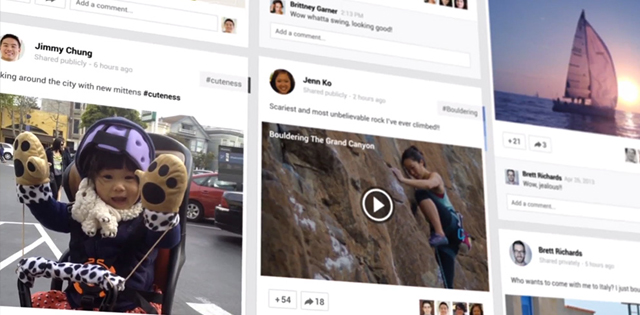
Samsung Galaxy S4 with Stock Android Coming in June
Perhaps the biggest surprise of all from this year’s conference, Google will be shipping a version of the Samsung Galaxy S4 without Samsung’s TouchWiz UI and included apps. Sporting a simpler Android install, this should put the handset in line for early OS updates direct from Google, whilst trimming away the “bloat” in the form of Samsung’s pre-installed software. Unfortunately this variant of the S4 is only scheduled for release in the US at present – hopefully we will see a release on this side of the pond soon!
So that concludes our roundup of the key announcements of this year’s I/O. There’s been a whole host of announcements across the full spectrum of Google’s apps and services, and it looks like it’s going to be another strong year for the Big G. For more information, check out the post on Google’s own blog.
New Dynamic Infographic from Google – How Search Works
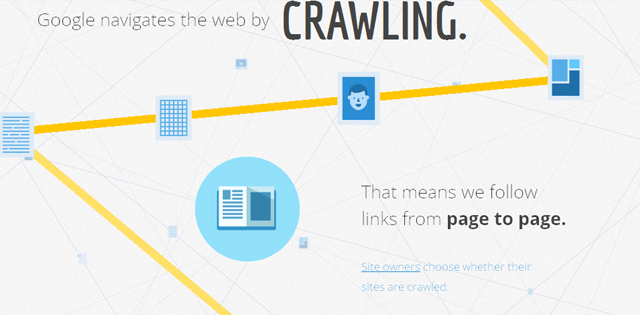
If you’ve ever been curious exactly how Google works, you might have found it a bit difficult to get your head around – which is completely understandable, as it’s not exactly simple being the most powerful search engine in the world!
However, the generous guys at the Big G have taken time out of their hectic schedule to let us know exactly how they do it – in simple terms, of course.
Search Meets Social – Google Authorship
The introduction of Google Authorship into Google’s ranking algorithms could seriously shake up the SERPs – We take a look at why, and how you can start to prepare!
In-bound marketing techniques have made quite a large shift in the last few years, as I’m sure regular readers are aware by now – the importance of inbound link building has subsided to make way for a content and usability-based ranking system known as TrustRank.

This shift has, however, brought with it a new breed of unscrupulous strategies – poorly generated content with no real substance, article spinning (the chopping-and-reforming of articles in order to make them appear unique – often with less than perfect grammatical results) and article directory sites full of worthless content that is read by no one, created solely for the purpose of manipulating positioning on search engine results pages.
The Authorship concept was conceived a lot longer ago than you may first think; the relevant patent was approved way back in 2007. Originally dubbed Agent Rank, the patent has now undergone two continuations (the first in 2009), but the most recent continuation is the most significant.
This is the first claim in the most recent update:
“1. A computer-implemented method comprising: evaluating a document that is hosted on a site, the document including a content item to which a maker of the content item has applied a digital signature; determining whether the digital signature is portable; if the digital signature is portable, using a reputation score associated with the maker in calculating a quality score for the document; and if the digital signature is not portable, using the reputation score associated with the maker in calculating the quality score for the document only if the digital signature is fixed to the site.”
(I know, it made my head hurt too!)
The most important bit is the mention of a “portable” digital signature. This allows the author to create content for various blogs, websites and article directories, whilst carrying through their reputation from their other online content. The name of this portable digital signature? The big G’s very own social network, Google Plus.
This allows you to associate all the content you personally produce with your own Google account. Google can then use this to determine how useful your content is, by judging how well received your previous content has been. If you continue to write good, useful articles with meaningful content, then you can expect to see your Author Rank increase, and as a result, your articles will reach higher positioning in search results. If you write rubbish articles with spammy content that are of no use to anyone, then you can probably expect the opposite to happen.
Authorship works by utilizing a new tag introduced in HTML5: the rel=author tag. This tag can be added to any <a> tag to denote that the link refers to the author of the content. Using this tag in conjunction with your Google+ URL allows you to link your content to your Google+ account, et voilà! You’ve claimed your first piece of content.
Of course, it isn’t quite that simple. In order to verify your authorship of the article, you must first add the URL of your blog to the “Contributor to” section of your Google+ profile, in order to prevent people from claiming their content was written by any Google+ user that takes their fancy.
Being able to verify your content with your Google+ account will help your content rise above the sea of poorly written junk-content of the black-hat SEO practitioners and article spinners.
It’s important to remember that at present, authorship doesn’t offer any actual boost to your search engine rankings (although studies have found that the “rich snippets” that authorship can generate can increase your CTR by 30-150%, and there’s another hidden benefit of authorship too!); it is simply just a way of claiming credit for your work. However, Google have frequently voiced their intentions for a method of distinguishing and validating content in search results, so it is extremely likely to become a deciding factor in search engine rankings in the near future. Whilst the introduction of Authorship as a factor in deciding rankings isn’t likely to penalise sites, and it probably won’t have anywhere near the SERP-smashing effects we’ve seen from our furry friends Panda and Penguin, it’s going to carry some sort of weight, and it makes sense to begin preparing for it to come into swing now, as those that don’t are putting themselves at a disadvantage already. If you fail to prepare, prepare to fail!

